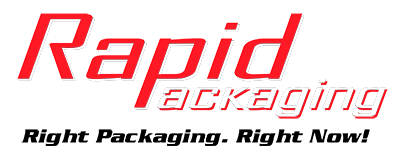Transporting and/or storing large amounts of materials in large flexible bags (like FIBCs) can be inherently dangerous. Because of this, we talk a lot about safety. It cannot be understated how important the safe use of bulk bags is to us at National Bulk Bag. Safe working load (SWL) is one of the most important things any user should know about the bag they’ve purchased. But how do you find out the SWL of the bag you’re using? How do you know when you’re exceeding your SWL? In this post, we take a deeper dive into safe working load and examine the various ways to weigh FIBCs and ensure you’re not exceeding the limits of the bag.
All About Safe Working Load
The safe working load of a bag is the safe rated amount of weight (expressed in pounds in the United States) that a bulk bag can effectively hold without failing. Bag failure is extremely dangerous and can lead to injury and/or death. It is imperative to know your bag’s SWL and not exceed that weight during use.
There are a few tools we’d recommend you keep handy when figuring out the right bag with the right SWL for your product and application. Check out our Product Weight Guide and Volume Calculator by clicking here. It will help you identify the density of your product and how that will impact what FIBC is safe for use.
By far the easiest way to find out your bag’s SWL is to contact your supplier or simply ask during the purchasing process. Many suppliers will also list this information on their website and include it in any stock list they make available (see the example below). This can also serve as an easy litmus test for your supplier. Are they talking to you about the rated SWL during the purchase process? If not, this could be a red flag. If safety isn’t as important to your supplier as it is to you - are they the right fit?
 Highlighted above is an example of the rated SWL on the National Bulk Bag website
Highlighted above is an example of the rated SWL on the National Bulk Bag website
The safe working load of your bag can have a massive impact on bulk bag safety. You can learn more about SWL and finding the right FIBC for your product and application by clicking here.
Weighing Industrial Bulk Bags
So you’ve made the decision to follow safe practices and use a bag rated for your product, but where do you start? How do you go about weighing a filled bag?
Thankfully you have a lot of options when it comes to weighing your filled bags. The best place to start is in your facility with the equipment you already own. Are you currently using pallet wrappers? If so, you’re in luck. Most all pallet wrappers have scales built into their bases allowing easy weighing. Are you using specialized equipment to fill your bulk bags? Most filling equipment has the ability to either weight the product as it is entering the bag or after the bag has been filled. You may already have the equipment to weigh your FIBCs in your facility and not even know it. Using existing equipment is by far the most cost-effective way to make sure you’re under the rated SWL of your bag.
However, if you don’t have any equipment in your facility that is capable of weighing large things like bulk bags there are still quality options available. Industrial scales designed for pallets can weigh anything from 5,000 to sometimes over 10,000 pounds are often available for less than $3,000.
If you need help finding an industrial weighing solution for your facility, we’re here to help. Our packaging affiliate Rapid Packaging has a team of experts on standby ready to find you the right solution for your product and application.
Thanks for reading, check out our New Buyer's Guide!
It's our mission to make your bag buying experience easy, informative, and enjoyable. We also want to share our knowledge with you, so you can make the best purchasing decision for the company you represent. Our Buyer's Guide to Purchasing Bulk Bags is a great starting point for any decision. It contains critical information ranging from types of bags to important safety information about handling and transportation.

Download the guide by clicking below. By downloading, you'll learn all about:
- Types of bags
- Coated vs. uncoated
- Liners
- Bags with baffles
- Types of lift loops
- 5:1 & 6:1 safety guidelines
- Much more!
Click the button below to download our comprehensive buyer's guide.






